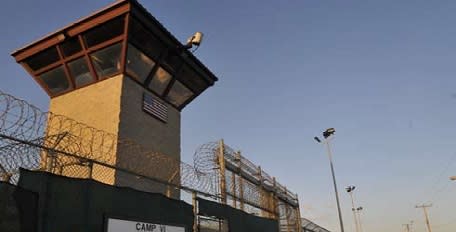Obama’s Guantanamo move will face significant debate
Earlier this month, President Obama signed the 2015 National Defense Authorization Act which, among other things, included restrictions designed to block the Executive Branch from moving Guantanamo detainees to federal prisons into the United States proper. This comes as the Obama administration is preparing a report that outlines options for closing the detention facility at Guantanamo Bay, Cuba, and marks the beginning of another political and legal battle surrounding the infamous facility.
After the end of the Spanish American War in 1898, the United States agreed to remove all troops from Cuba and support Cuban independence. In 1903, the so-called Platt Amendment was added to the treaty, which said that the Cuban government would be required to lease a 45 square mile patch of land in southeast Cuba to the United States. The terms of the agreement gave the United States “complete jurisdiction and control” over the territory through a perpetual lease that could only be ended through the mutual agreement of both the Cuban and American governments.
Between 1903 and 1991, Guantanamo Bay didn’t serve much use to the United States, and got national attention only when tensions between the United States and Cuba flared up, at times over U.S. control of the area. In 1991, President George H.W. Bush decided to use Guantanamo Bay as a place to shelter Haitian refugees fleeing domestic conflict, but came under intense scrutiny from human rights organizations for the reportedly terrible living conditions of the settlement.
In 1995, these groups sued the federal government on behalf of these refugees, and claimed that their fundamental rights were being violated at Guantanamo. The Eleventh U.S. Circuit Court of Appeals established that constitutional limits on the actions of the federal government do not extend to Guantanamo Bay. The Court decided that laws that protect the rights of refugees “bind the government only when the refugees are at or within the borders of the United States” and that Guantanamo does not meet these criteria.
In January 2002, the Department of Defense announced that it would establish a detention facility at Guantanamo Bay in order to interrogate and prosecute “unlawful combatants” in the emerging War on Terror. Under the direction of Secretary Donald Rumsfeld, the Department of Defense did not afford these individuals various due process rights guaranteed by the Geneva Convention because of their “unlawful combatant” statuses.
Since the establishment of the detention facility, various leaks, revelations, and lawsuits have brought detainee treatment at Guantanamo into the national spotlight. A number of legal challenges were mounted against the Bush administration’s assertion that little to no rights needed to be afforded to Gitmo detainees, and multiple cases made their way to the Supreme Court. One of the most important cases was Hamdan v. Rumsfeld in 2006, in which the Court ruled that detainees were entitled to minimal due process protections under the Geneva Conventions, including the right to petition for habeas corpus in federal court.
In the 2008 Presidential campaign, Senator Barack Obama included in his policy platform the pledge that he would close down the detention facility at Guantanamo Bay. In one of his first acts as President, Mr. Obama signed an executive order to “promptly close detention facilities at Guantanamo, consistent with the national security and foreign policy interests of the United States and the interests of justice”. President Obama has been unable to follow through on closing Gitmo despite this proclamation in light of resistance from Congress. Despite this push back, over the past seven years President Obama has cut the number of detainees at Guantanamo Bay by more than half. Just this past Sunday, the Pentagon announced that the number of detainees would be reduced from 112 to 107, as five men were being released and sent to the United Arab Emirates.
President Obama is expected to unveil a plan in the coming weeks outlining strategies to close Gitmo and transfer detainees to federal prisons in the United States proper. Senator John McCain, who was President Obama’s general election opponent in the 2008 election and supports the closing of Gitmo, has said that any unilateral executive action would be “unconstitutional…I think we’d have to go to court”.
Former While House counsel staff Gregory Craig and Cliff Sloan disagree with Senator McCain, and wrote in an op-ed that “under Article II of the Constitution, the president has exclusive authority to determine the facilities in which military detainees are held… Obama has the authority to move forward. He should use it.”
In response to that editorial, the Washington Post editorial board said it believed that the President needed to work with Congress on any such move. Mr. Obama should not and, we believe, cannot close the prison unilaterally. Such a move would ignore the repeatedly expressed will of Congress,” it said.
If President Obama moves forward with a strategy of finally closing Guantanamo through executive action, he will undoubtedly face another legal and political battle regarding the extent of his executive authority. Earlier this month federal courts blocked his executive order relating to immigration, and there are reports that he is considering using his executive authority as a way to bypass Congress on implementing new gun safety measures.
Jonathan Stahl is an intern at the National Constitution Center. He is also a senior at the University of Pennsylvania, majoring in politics, philosophy and economics.
Recent Stories on Constitution Daily
Constitution Check: Could state governments sue to keep out Syrian refugees?


